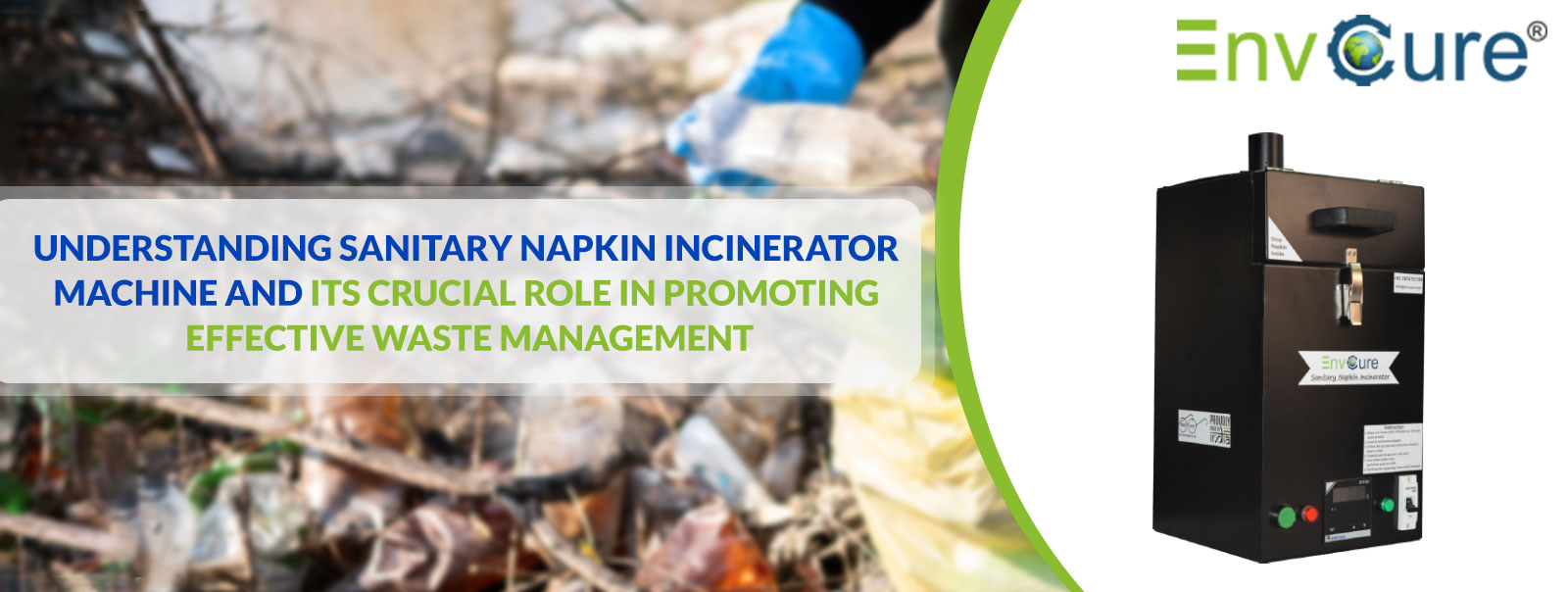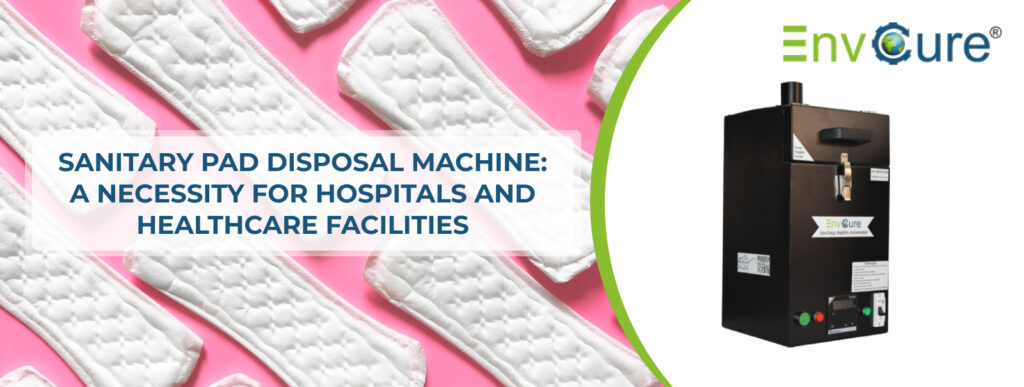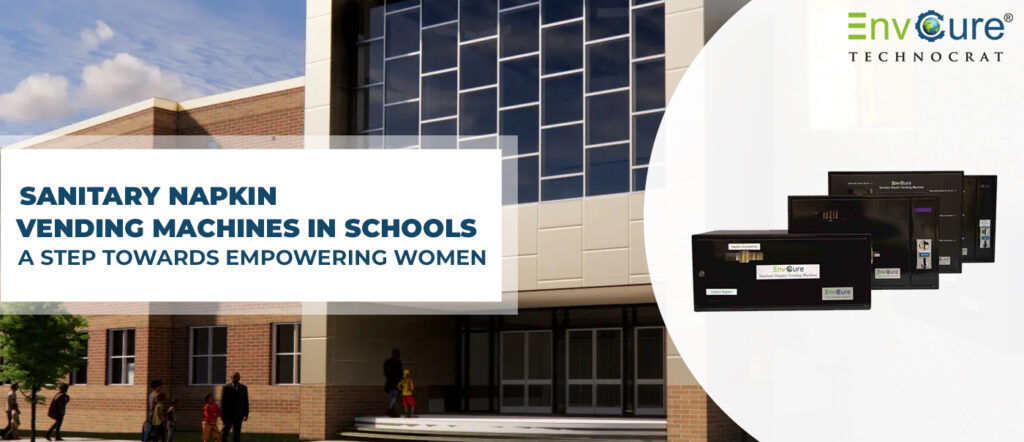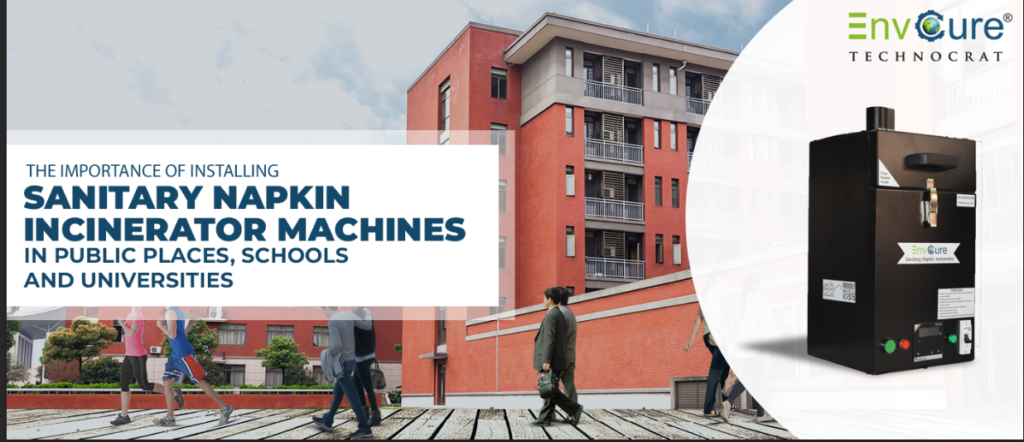One of the most overlooked categories of waste, particularly in urban areas, is sanitary napkin waste. These essential products for women have an environmental impact that’s often neglected. Enter the Sanitary Napkin Incinerator Machine, a game-changer in the realm of sustainable waste management.
The Problem with Sanitary Napkins
Sanitary napkins, while indispensable in our lives, pose a significant challenge in the sphere of environmental conservation and waste management. These products, commonly used by billions of women globally, come with a host of issues that extend beyond their primary function.
Non-biodegradability: Sanitary napkins are primarily non-biodegradable, leading them to persist in the environment for years if not decades. The main components of most sanitary pads are synthetic and plastic materials that resist decomposition. This non-biodegradability is a primary concern because:
- Landfills are swelling with increasing volumes of such waste, much of which won’t break down in our lifetimes.
- Animals often mistakenly consume these products, leading to health complications or even death.
Landfill space: The sheer volume of sanitary napkins disposed of daily accumulates, leading to significant space occupation in landfills. This burgeoning volume:
- This leads to increased pressures on waste disposal systems.
- Amplifies the need for new landfill sites, often resulting in deforestation or the use of other crucial lands.
Pollution hazards: Improper disposal methods, such as flushing down toilets, lead to blockages in sewage systems. The ramifications include:
- Increased costs for municipalities in terms of maintenance.
- Risks of sewage overflows, which can pollute natural water sources and harm aquatic life.
Exposure to pathogens: Sanitary napkins come into contact with human blood by their very nature. If not disposed of properly:
- They become a breeding ground for harmful bacteria and pathogens.
- Workers in waste management inadvertently get exposed, risking the spread of diseases.
Introducing the Sanitary Napkin Incinerator Machine
In response to the mounting challenges posed by sanitary waste, the Sanitary Napkin Incinerator Machine emerged as a beacon of innovation.
Functionality: At its essence, the machine’s primary role is to incinerate sanitary napkins safely. Converting them into ash ensures:
- Drastic reduction in the volume of waste, easing the pressure on landfills.
- Destruction of any pathogens, promoting hygiene and safety.
Efficiency: Modern iterations of these machines, like those developed by companies such as EnvCure, use cutting-edge technologies to ensure efficient operations. Features include:
- Sensors and automated systems to ensure optimal burning.
- Filters and emission control mechanisms to minimise air pollution.
User-friendly Design: One of the main barriers to proper sanitary waste disposal has been convenience. Addressing this, many modern machines:
- Are compact and can be easily installed in restroom facilities.
- Include intuitive controls, sometimes even with multilingual instructions, ensuring they can be used by everyone without specialized training.
A Deeper Dive into the Technology
The Incinerator Machine isn’t just another industrial device; it’s the amalgamation of various advanced technological components that come together to serve a crucial purpose.
Automatic Power-Off: Modern designs ensure energy conservation. This feature:
- Detects when the incineration process is complete, cutting off the power supply automatically.
- Not only conserves energy but also reduces the wear and tear on the machine, extending its lifespan.
Thermal Protection: The machine’s design often incorporates high-density ceramic fiberboards. These:
- Ensure heat is contained efficiently within the machine.
- Reduce the risk of exterior heating, making the machine safe to touch even during operation.
Compact Design: Despite their robust functionalities, the machines prioritize spatial economy. These designs:
- Allow installation in tight spaces, making them suitable for varied locations, from public restrooms to school facilities.
- Are crafted considering an aesthetic appeal, ensuring they don’t stand out jarringly in interior settings.
Beneficiaries of the Sanitary Napkin Incinerator Machine
The Sanitary Napkin Incinerator Machine boasts a broad application range, offering substantial benefits across various sectors. Here’s a breakdown of its key beneficiaries:
| Sector | Institutions/Spaces | Benefits |
| Educational Institutions | Schools, Universities, Hostels | Promotes menstrual hygiene; eco-friendly waste disposal. |
| Corporate Establishments | Office Complexes, Tech Parks | In-house waste management; no reliance on external services. |
| Healthcare Institutions | Hospitals, Clinics | Hygienic waste disposal ensures safety of patients and staff. |
| Hospitality Industry | Hotels, Resorts | Enhances eco-friendly reputation; appeals to conscious travelers. |
| Public Spaces | Malls, Cinemas, Transport Hubs | Manages high-footfall waste, and upholds public health standards. |
| Residential Complexes | Apartment Buildings | Community sustainability; reduces municipal waste. |
| Religious Places | Temples, Churches, Mosques | Demonstrates commitment to cleanliness and environmental stewardship. |
| NGOs & Charities | Charitable Institutions | Reinforces the message of women’s health and sustainable waste disposal. |
| Rural Areas | Semi-Urban Communities | Transforms waste management without straining local environments. |
Global Implications and the Push for Wider Adoption
The adoption of the Sanitary Napkin Incinerator Machine isn’t just a local concern; it has global repercussions.
Standardized Disposal: One machine can set the precedent for global practices:
- By providing a universally effective method of disposal.
- Offering a blueprint for nations to incorporate into their waste management strategies.
Environmental Sustainability: The global call for sustainable practices amplifies the importance of such machines:
- Their wide-scale adoption can significantly reduce the environmental damage caused by sanitary waste worldwide.
- Can act as a stepping stone towards more comprehensive waste management solutions.
Supporting Women’s Health: Beyond the environment, the machine also addresses a significant health issue:
- By ensuring that disposed sanitary products don’t end up where they shouldn’t, it reduces risks of infections in communities.
- Promotes menstrual hygiene education and practices in regions where it’s needed the most.
Conclusion: Making the Shift with EnvCure
As we navigate an era defined by rapid environmental change, solutions like the Sanitary Napkin Incinerator Machine are not just innovations; they are necessities. The team at EnvCure Technocrat LLP has exemplified the spirit of innovation by not only acknowledging the environmental challenges posed by sanitary napkins but also providing a pragmatic solution. If you’re committed to creating a sustainable future and promoting effective waste management, it’s time to consider integrating EnvCure’s waste management solutions. Get in touch with the experts today!
Frequently Asked Questions:
Q.1. Why are sanitary napkin incinerator machines important for waste management?
Ans. These machines are important because they help manage and dispose of used sanitary napkins effectively, reducing the environmental impact, preventing blockages in sanitation systems, and promoting hygiene.
Q.2. What are the key benefits of using a sanitary napkin incinerator machine?
Ans. Benefits include reducing solid waste, preventing clogs, minimizing the carbon footprint, promoting hygiene in public restrooms, and ensuring a cleaner and more sustainable environment.
Q.3. Are sanitary napkin incinerator machines safe to use?
Ans. Yes, when used correctly, these machines are safe. They are designed with safety features to prevent accidents. Users should follow guidelines for safe operation.








